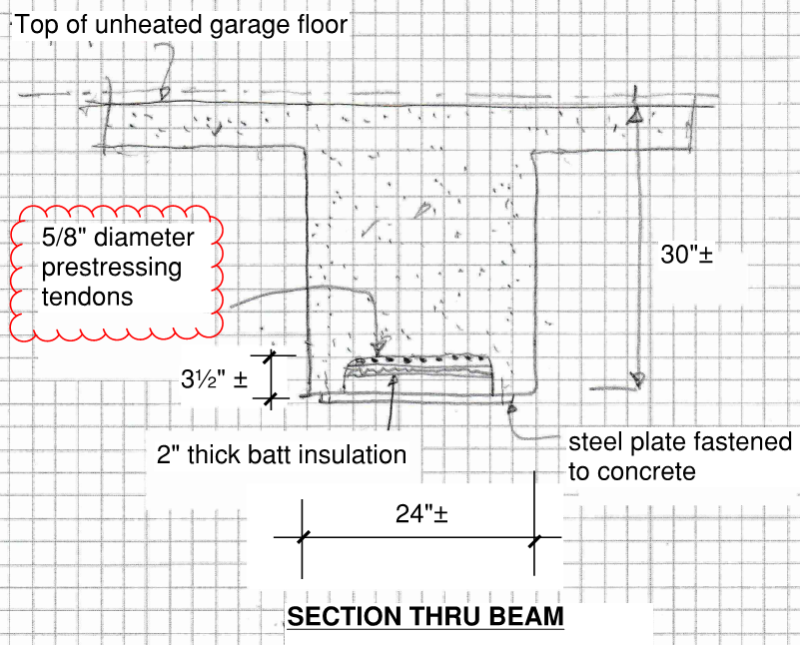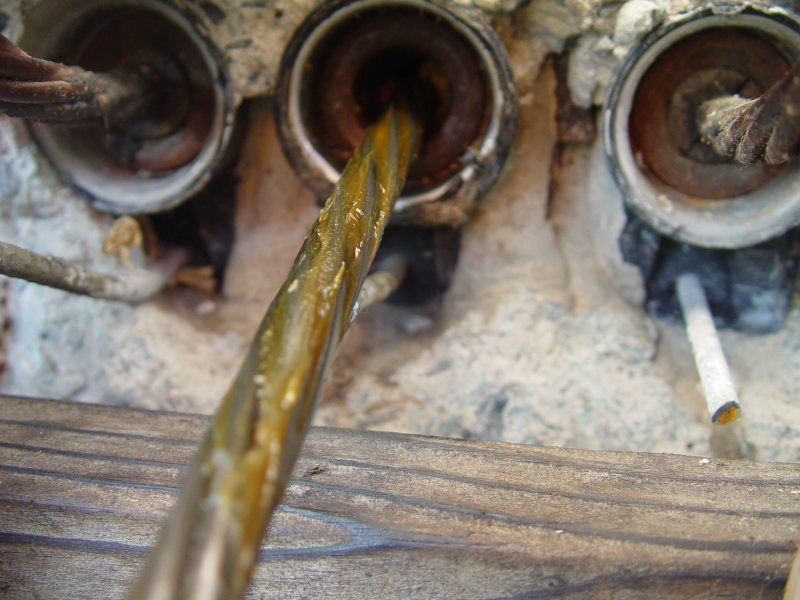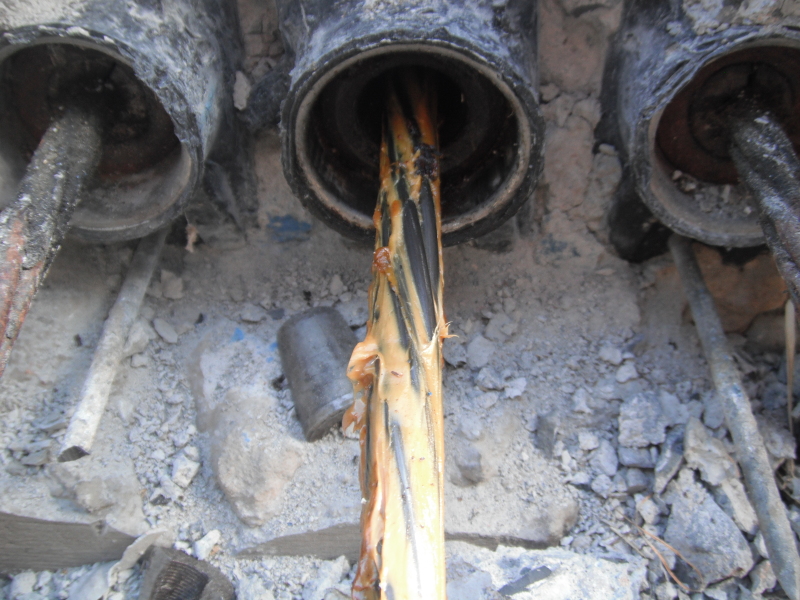In a post-tensioned above-grade open-air unheated garage in southern Ontario, I see that condensation can sometimes form on the slab and beam soffits and beam sides. Some years ago inspection openings in the beam soffits were chipped at low points of the tendon drapes to allow periodic inspection of the tendons for appearance and tightness testing by crowbar prying. The 16" ± square openings are closed up by placing some batt insulation under the tendon and then a steel closure plate, as shown in the attached schematic sketch. The plate is sealed around its perimeter with caulking (sealant).
Question:
Can the batt insulation be relied on to significantly changes the dew point of the tendon so that condensation is significantly less likely to occur? My opinion is that the batt insulation will have very little if any effect in this regard, because the steel tendon is in continuous contact with the mass of surrounding temperature and will quickly reach the same temperature as the surrounding concrete. But I am interested in your opinion. (If the plate perfectly seals the opening, perhaps the issue of condensation is a little less significant (I don't know) but it is hard to ensure that a perfect seal is always achieved).
Question:
Can the batt insulation be relied on to significantly changes the dew point of the tendon so that condensation is significantly less likely to occur? My opinion is that the batt insulation will have very little if any effect in this regard, because the steel tendon is in continuous contact with the mass of surrounding temperature and will quickly reach the same temperature as the surrounding concrete. But I am interested in your opinion. (If the plate perfectly seals the opening, perhaps the issue of condensation is a little less significant (I don't know) but it is hard to ensure that a perfect seal is always achieved).



